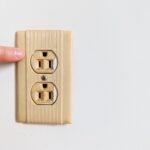Electric water heater not delivering the hot water you expect? Tackling this issue can be frustrating, but understanding the workings and testing of water heater elements can make all the difference in restoring your home’s hot water supply efficiently. Dive into this essential guide to uncover insights and practical steps for ensuring your water heater operates reliably.
- Learn about the crucial role electric water heater elements play and identify the signs of malfunction.
- Spot common symptoms like inconsistent water temperatures to diagnose potential element issues.
- Follow a step-by-step procedure, complete with testing tools, to effectively troubleshoot your water heater.
- Discover how to safely replace faulty elements and boost your water heating system’s performance.
By implementing these strategies, you’ll not only solve current hot water problems but also enhance the longevity and efficiency of your electric water heater, providing consistent comfort and convenience in your home.
Understanding Electric Water Heater Element Testing: Troubleshooting No Hot Water Issues
Electric water heater elements are essential components that ensure a steady supply of hot water. They function by converting electrical energy into heat, which directly warms the water within the tank. Given their critical role, understanding how these elements work is vital for anyone facing issues with no hot water at home.
Typically, a water heater has two elements: an upper heating element and a lower heating element. These are controlled by thermostats that ensure the water is heated to the desired temperature. When one or both elements stop functioning correctly, you may experience irregular water temperatures or even a complete lack of hot water.
The common signs of malfunctioning electric water heater elements include unusual noises, fluctuating water temperatures, and unexpectedly high energy bills. It’s important to identify these symptoms early to prevent more severe problems that could affect the entire water heating system.
By proactively testing your water heater elements, you can quickly identify and resolve issues, ensuring consistent hot water delivery and maintaining the efficiency of your home’s water heating system.
Common Symptoms of Faulty Water Heater Elements
Experiencing inconsistent water temperatures or a complete absence of hot water can often be attributed to faulty water heater elements. These common symptoms are usually the first indicators that the heating element may be malfunctioning.
If you notice that the water takes too long to heat up or the hot water runs out faster than usual, it may suggest problems with one or both elements. A sudden spike in electricity bills is another red flag, signaling that your water heater is using more power due to inefficient heating.
Additionally, if you hear strange sounds such as popping or hissing from the water heater, it could mean that sediments have built up around the heating element. This buildup can cause the element to burn out more quickly, necessitating immediate attention.
Identifying these early warning signs allows you to troubleshoot and replace faulty components, ensuring your electric water heater remains reliable and efficient. Regular checks can help prevent these issues, saving costs and enhancing the performance of your home’s water heating system.
Step-by-Step Procedure for Electric Water Heater Element Testing: Troubleshooting No Hot Water Issues
Testing electric water heater elements is an essential process when facing issues like no hot water. This step-by-step guide will help you conduct a thorough evaluation of your heater elements, using vital tools such as multimeters to ensure accurate diagnostics.
Before you begin, ensure the water heater is powered off and has cooled down sufficiently. Safety is paramount, so take the necessary precautions to avoid any electrical hazards.
1. Gather Your Tools: Start with basic tools required for the test. A digital multimeter is indispensable, as it accurately measures the electrical output and resistance of the heating element.
2. Access the Heater Elements: Begin by removing any covers or insulation panels on your water heater to expose the heating elements. This often involves using a screwdriver to remove screws or bolts.
3. Test for Current and Voltage: Set your multimeter to the ohms setting to measure resistance. Place the probes on the terminals of the heating element. A functional element will usually show resistance between 10 to 30 ohms. A reading of zero or no continuity suggests the element is defective.
4. Interpret Results: Compare the multimeter’s reading with the manufacturer’s specifications. If you detect discrepancies, it’s likely that the element needs replacement.
5. Reassemble the Water Heater: Once testing is complete, carefully replace any panels or insulation that was removed. Ensure everything is securely in place before turning the power back on.
Following these steps for electric water heater element testing will help identify any potential issues swiftly and efficiently, restoring consistent hot water availability in your home.
Replacing a Malfunctioning Water Heater Element
Once you’ve diagnosed a malfunctioning water heater element, timely replacement is crucial to restoring your system’s efficiency. Here’s a safe method to replace a faulty element:
Firstly, ensure all electrical supplies to the heater are disconnected. Use a voltmeter to confirm there’s no live current, ensuring a safe working environment.
Remove the Faulty Element: Drain the water heater if needed to prevent leaks. Using a wrench, carefully unscrew the defective heating element from its housing. It might require some force if corrosion is present.
Choose a Compatible Replacement: Select a replacement element that matches the specifications of the original. Consider factors like wattage and thread size to ensure compatibility.
Install the New Element: Gently position the new element into the heater’s opening, ensuring it fits snugly. Tighten it securely with a wrench to prevent leaks but avoid over-tightening, which can damage the element.
Finish the process by reattaching any covers or panels you removed earlier. Restore the power supply by turning on the main electrical switch. Verify that the new element is functioning correctly by checking for warm water output.
By following these replacement steps, you’ll efficiently resolve most water heating issues caused by faulty elements, ensuring your system operates smoothly and reliably.
Preventive Maintenance for Reliable Water Heating
Ensuring the longevity and efficiency of your electric water heater is essential for maintaining a consistent supply of hot water. Implementing preventive maintenance strategies not only helps in preventing unexpected breakdowns but also lowers energy costs over time.
One critical step is to regularly inspect the heating elements and the tank for signs of wear or corrosion. This practice helps in early detection of potential issues, allowing for timely repairs.
Flushing the tank periodically is another effective preventive measure. Over time, sediment can accumulate at the bottom of the tank, affecting the heater’s performance and potentially damaging the element. By flushing the tank, you help maintain the system’s efficiency and extend its lifespan.
It’s also important to keep the thermostat settings at an optimal level. Setting the thermostat too high can lead to higher energy consumption, while low settings might not provide the desired water temperature. A moderate setting, usually around 120 degrees Fahrenheit, is recommended for both efficiency and safety.
Regularly checking for leaks around the tank and valves can prevent water damage and ensure that the unit operates smoothly. Tightening any loose connections and replacing worn-out gaskets are simple yet effective practices.
Lastly, scheduling annual professional maintenance checks can uncover potential issues that might not be evident during regular inspections. Professionals have the expertise and tools to perform thorough evaluations, ensuring your system runs efficiently.
By incorporating these preventive measures, you secure reliable access to hot water, reduce the likelihood of major repairs, and enhance your electric water heater’s lifespan. This proactive approach is a smart investment in both time and financial savings.
Frequently Asked Questions about Electric Water Heater Element Testing
Why is my electric water heater not producing hot water?
It could be due to a faulty heating element, incorrect thermostat settings, or power supply issues.
How do I know if my water heater element is bad?
Common signs include no hot water or inconsistent temperatures. Testing with a multimeter can confirm if the element is faulty.
Can I test the water heater element myself?
Yes, with the right tools like a multimeter, you can test the element following safety precautions.
What tools are needed to test a water heater element?
A multimeter and screwdriver are essential for testing and replacing the element.
When should I replace my water heater element?
Replace the element if testing shows it’s defective or if it’s old and inefficient.
How often should water heater maintenance be performed?
Annual maintenance is recommended to ensure efficient operation and prevent issues.





